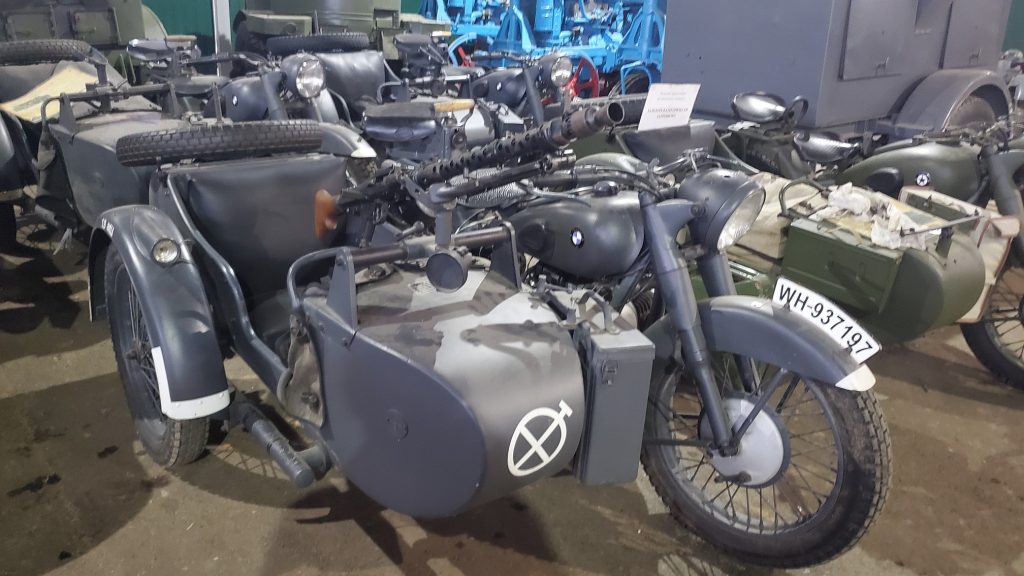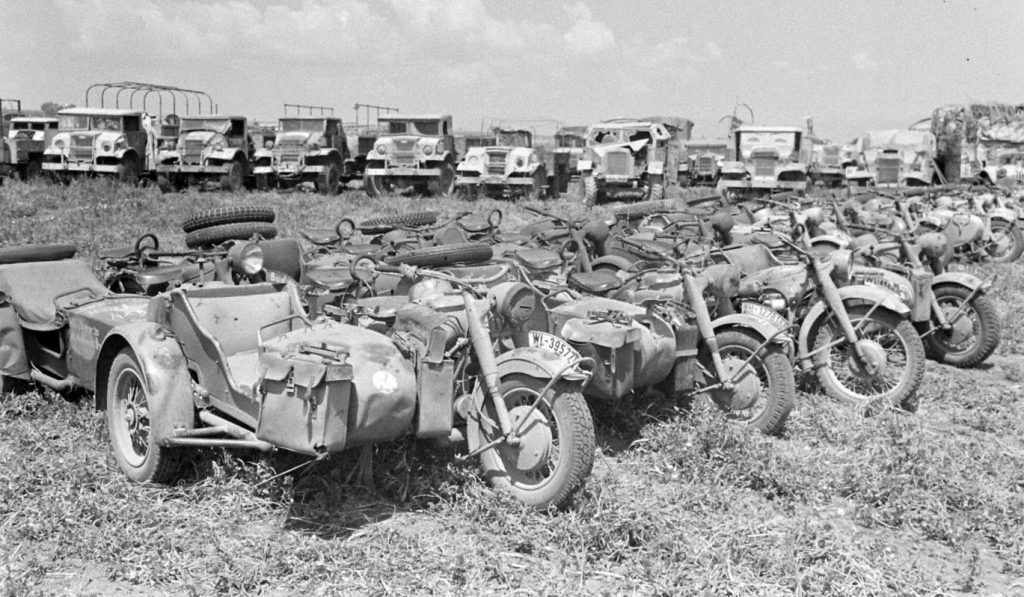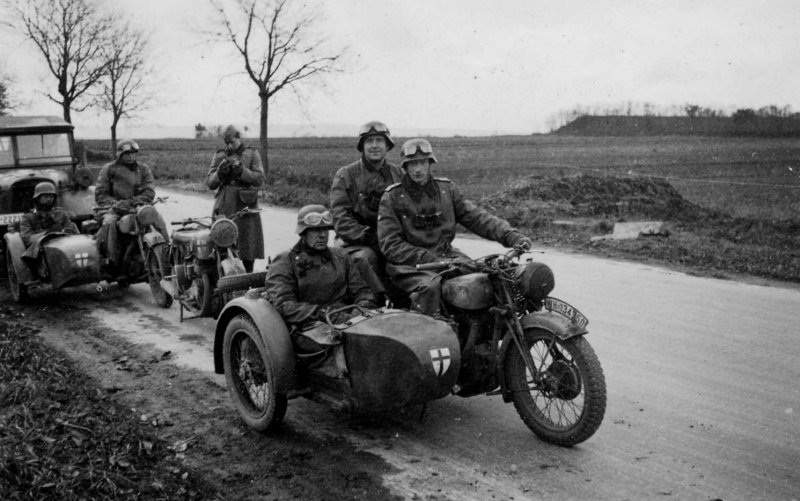BMW R75 Motorcycle History

Before the start of World War II, Germany paid a lot of attention to motorcycles with sidecars, this was clearly seen in the number of participants in International competitions, among which most were Germans on motorcycles with sidecars. Later, German propaganda openly acknowledged that it was these sporting events that helped to expose design flaws and train high-class drivers using the harsh conditions of the competition.
Of course, they were very different from the competition: the drivers had to drive their cars thousands of kilometers for months, often without having the opportunity to overhaul tired components. Of course, the terrain was worse than during the tests, and the fact that no one specially selected these machines as the best among those produced left its mark on the requirements for these “all-rogues”.
In the mid-1930s, sidecar wheel drive motorcycles began to appear in Belgium (FN M12a SM ), in France (Gnome-Rhone AXII ), England (Norton Big Four) and even Japan (Rikuo Type 97 andKurogane Type 95 ). These 3×2 motorcycles performed well on the off-road, but the German war machine was in no hurry to draw conclusions. The Wehrmacht wanted the best off-road motorcycle at its disposal.
In the fall of 1937, the High Command of the Wehrmacht’s ground forces formulated the requirements for a new off-road motorcycle, two of Germany’s largest motorcycle manufacturers, BMW and Zündapp, took on the order. The resulting motorcycles were similar both externally and structurally, but today we will only talk in detail about the BMW R75, and leave the Zündapp KS750 for later.
The ancestor of the R75 was the R12, introduced in 1935, which featured a telescopic front fork with hydraulic shock absorbers.
Powerful 746 cc engine cm, a 4-speed gearbox and shaft drive made the car fast and reliable, but the small distance between the wheel and the wing created many problems for German motorcyclists on the Eastern Front.
The BMW R75 engine, in part, resembled the under-valve from the R71. Also a gasoline four-stroke, two-cylinder “square” (cylinder diameter and piston stroke are equal to 78 mm) engine with a working volume of 745 cc. see, all also mounted across the frame.
But unlike its more peaceful ancestor, the new engine became an overhead valve, and, for ease of maintenance, the rocker arm of each valve was closed with a separate cover. The new power plant, designed not so much for maximum power as for maximum service life, developed 26 hp. at 4400 rpm.

BMW R75 engine
The motorcycle was started with a kickstarter. The magneto used in the ignition system with an automatic ignition timing adjustment mechanism ensured reliable ignition operation, as evidenced by the candles, which quietly “passed” 12 thousand kilometers without cleaning and replacing. Magneto, also used in the Zundapp KS600 and BMW R71 motorcycles, came from two manufacturers: Noris ZGA2 and Bosch FJ2 R134. A Noris magneto is installed on the “Motorworld” copy, which proved to be excellent during operation.












